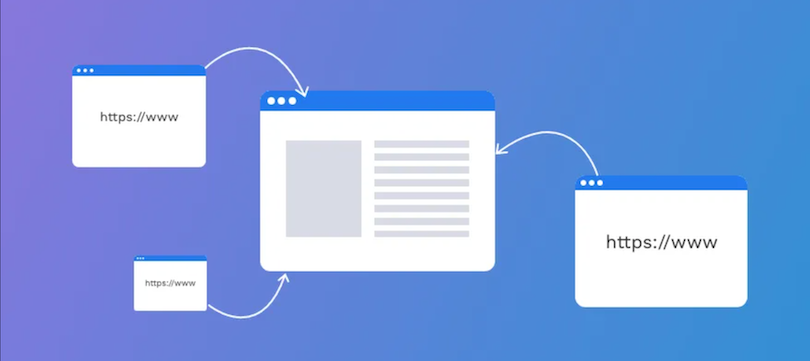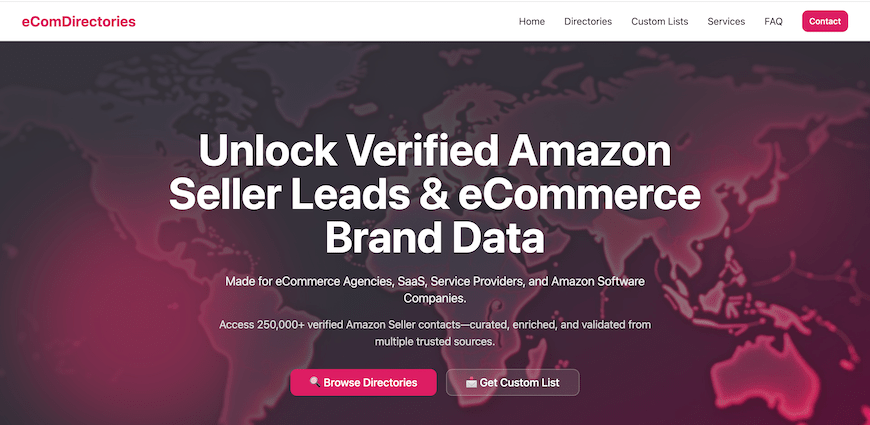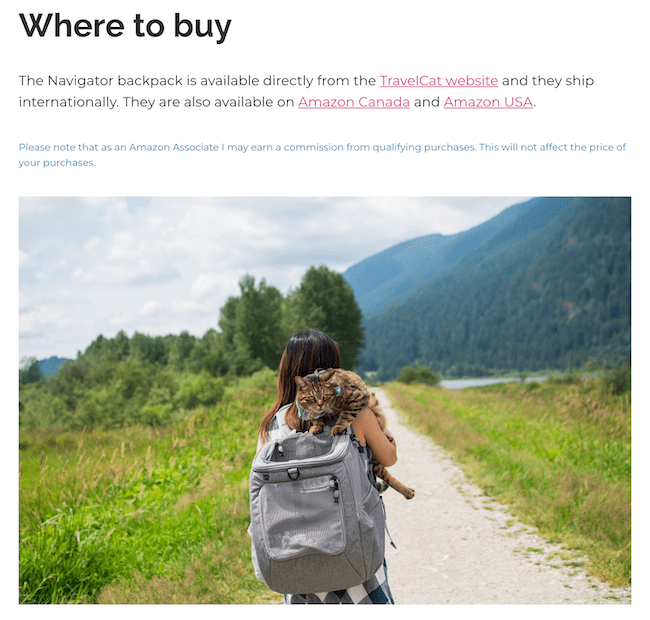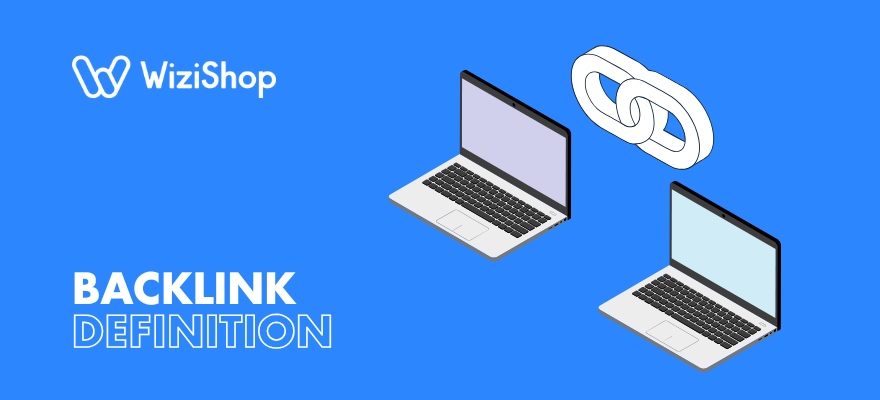Key points in this article:
- A backlink is a link placed on another website that redirects to yours: it’s an essential signal of trust for Google.
- Backlinks are part of the “authority” pillar of SEO, alongside content and technical aspects.
- They help improve your authority, better position you on your keywords, and increase traffic to your online store.
- Not all links are created equal: prioritize quality over quantity and avoid massive purchases of artificial links.
- To obtain quality backlinks, focus on useful content, guest blogging, partnerships, or collaborations with influencers.
- A well-constructed backlink profile contributes sustainably to the visibility, credibility and sales of your ecommerce business.
If you’re interested in search engine optimization (SEO), you’ve probably heard of the term “backlink.”
And you’ve probably also heard that these famous backlinks are essential for developing your online store’s SEO strategy.
Spoiler alert: it’s true!
In this article, I’ll explain in simple terms what a backlink is, what it actually does for SEO, and how to get quality links to boost your site’s visibility.
What is a backlink?
Definition
Backlink: a link placed on another website that redirects to your site.

In SEO, backlinks are part of the pillar of “authority,” alongside content and technical optimization, which form the triptych of search engine optimization.
This three-pronged approach has evolved over time: some now add UX (user experience), which includes design, loading speed, and usability.
From my perspective, these elements are integral to both content and technology, rather than separate pillars. But let’s get back to backlinks!
In practical terms, every time you click on a link on a website that redirects you to another site, you’re clicking on a backlink.
Here’s what a backlink looks like in HTML:
<a href="https://www.example.com">Here is an example website</a>
- <a>: HTML tag used to create a hyperlink (clickable link).
- href="https://www.example.com": The href attribute that indicates the URL to which the link redirects. Here, the link points to the example.com website.
- Here is an example website: This is the clickable text visible to the user. This is called the link anchor.
- </a>: Closing tag for the link.
Backlinks are most often found in the textual content of pages, but they can also be present on images, in the footer, or even in the header of a site. As long as there is a link, it’s a backlink!
Difference between backlinks and internal links
For SEO novices, it’s essential to understand the difference between backlinks and internal links—two concepts that are often confused.
A backlink (or inbound link) is a link placed on another website that redirects to yours.
An internal link, on the other hand, is a link that you create between pages on your own ecommerce site. In SEO, this is known as internal linking.
For example, on a category page, links that lead to your product pages are internal links. But if an external blog recommends one of your products and adds a link to your store, that’s a backlink.
Dofollow and nofollow backlinks
Another important distinction to understand when talking about backlinks is the difference between dofollow and nofollow.
When a website links to yours, it can do so in two ways: dofollow or nofollow.
These attributes tell Google whether to follow the link or simply ignore it.
Dofollow link
<a href="https://www.example.com">Here is an example website</a>
- This is the default type of HTML code.
- It tells Google that it can follow the link and pass on SEO authority to the target page.
Nofollow link
<a href="https://www.example.com" rel="nofollow">Here is an example website</a>
- This link contains a small additional attribute: rel="nofollow."
- This tells Google: “don't follow this link.”
- It doesn’t pass on SEO authority, but it can still bring visitors because it remains clickable for users.
- LLMs (ChatGPT, Gemini, Perplexity, etc.) value nofollow links, so they also help improve visibility in search engine algorithms.
→ Read also: my complete article on dofollow and nofollow links
Examples of backlinks
1. Stanley backlink
Here’s an article highlighting gift ideas for a 40th birthday: https://www.flightgift.com/blog/best-40th-birthday-gift-ideas/.
In this article, section 4 presents the Stanley Quencher Tumbler as a gift idea. At the beginning of the paragraph, the Stanley Quencher Tumbler is mentioned with a link to the product on the Stanley website.

This is a backlink to the Stanley website.
2. Pela backlink
Another instance is a blog post published on the VistaPrint website about eco-friendly brands: https://www.vistaprint.com/hub/eco-friendly-brands.
In the article, one of the brands mentioned is Pela, with a link to its story and mission on the company’s website.

This is another case of a backlink being used.
But what is the real benefit of these famous backlinks for your SEO?
That’s precisely what I’m going to talk about now!
Why are backlinks important in SEO?
Become an authoritative site
For the record, links between sites are the basis of a well-known Google algorithm: PageRank.
This algorithm measures the popularity of a website.
According to this principle, each link to a page is considered a “vote” of confidence.
The more backlinks a page receives, the more PageRank it accumulates, and the more authority the website gains in Google’s eyes.

To illustrate this idea, I like to draw this parallel: in real life, the more a person is mentioned, the better known they become. And if these mentions are positive, their reputation naturally grows.
On the internet, it works the same!
When high-quality websites add links to your online store, it boosts your authority and credibility with search engines, and therefore your visibility in search results.
Improve your keyword ranking
Competition is particularly fierce for certain keywords, and without backlinks, it’s going to be very difficult to rank highly.
Acquiring backlinks allows your site to gain authority, and this authority directly translates into better rankings in search results.
It’s a virtuous circle: the more your site inspires confidence in Google, the more it will be promoted.
Increase traffic to your site
This is the direct result of better positioning.
By improving your ecommerce site’s ranking for your various keywords, your website is going to be able to reach the first pages, or even the coveted top 3 or first position!
And automatically, these better positions lead to more clicks and therefore more organic traffic to your online store.
Boost your sales!
That’s the goal of every e-merchant.
With a good SEO strategy and quality backlinks, you’ll naturally generate more sales on your online store.
Top positions in search results, combined with increased traffic, will attract more qualified visitors to your product pages and therefore more potential buyers.
But backlinks can also have a direct impact on your sales.
Let’s return to the situation concerning the link to the Stanley website: someone reading an article on gift ideas for a 40th birthday discovers the Stanley Quencher Tumbler, then clicks on the link to the Stanley online store... and may well end up making a purchase on the site.
Depending on their location and relevance, certain backlinks can therefore become major sources of conversions for your ecommerce business.
Be cited more often in AI
This is a recent advantage linked to new artificial intelligence tools such as ChatGPT, Perplexity, Gemini, and Claude.
They rely on content published online to generate their responses.
Therefore, the more your site or brand is cited on the web, the more likely you are to be mentioned in the results produced by these AI tools.
By obtaining quality backlinks and improving your SEO rankings, you strengthen your overall online presence.
And this visibility encourages other sites to talk about your online store.
Even a simple brand mention, without a direct link, can contribute to this awareness and increase your chances of appearing in AI responses.
How do you get backlinks?
Now that I’ve outlined all the benefits of backlinks, you’re probably wondering how to get them for your online store.
First and foremost, keep one thing in mind: when it comes to backlinks, quality trumps quantity.
It’s tempting to want to get quick results and buy hundreds or even thousands of links on platforms like 5euros or Fiverr...
But don’t!
This is the best way to ruin your SEO (and I doubt that’s your goal).
Search engines like Google have algorithms, notably Penguin, that can detect artificial links and penalize websites that abuse them.
It’s therefore better to focus on natural, consistent, high-quality backlinks, even if there are fewer of them.
→ Read also: my article on Google Penguin right here
To follow best practices and obtain a credible backlink profile, you need to maximize your efforts on links coming from:
- sites with significant traffic and good authority;
- a variety of sources: blogs, online stores, directories, forums, media, etc.;
- sites dealing with a topic similar to yours, so that the link makes sense to Google (and internet users); and
- pages consistent with your topic, i.e., where the link fits naturally into the content.
And above all, you’ll want to build these links gradually over time.
Link building is a fundamental strategy: trying to go too fast is going to result in an artificial profile that may not deliver the expected results.
This is also why it can be a good idea to seek the support of a specialized ecommerce agency that can plan a campaign tailored to your sector.
Now that we’ve covered the basics, let’s look at how to get quality backlinks in practice.
There are several methods that I’ll briefly outline here.
- Linkbaiting
This strategy involves creating content that is so useful, original, or memorable that other sites naturally want to reference it!
Examples that work well for linkbaiting include studies, infographics, comprehensive guides, free online tools, etc.
- Directories
Submitting your site to specialized or professional directories can be useful, but only in moderation.

Many directories are no longer maintained, so focus on those that are active, relevant to your industry, and have a good reputation.
- Forums
Actively participating in forums or online communities related to your niche can also help you get some backlinks.
On this type of platform, the key is to provide value in your responses and integrate your links naturally, without resorting to spam.
- Link exchange
Agreeing with another site to add a mutual link can be beneficial if the two websites are complementary and relevant.
This strategy should be used sparingly, as too many direct exchanges can quickly appear artificial to Google.
- Guest blogging
Writing a guest post on a blog related to your topic is a very effective strategy for gaining visibility and authority.
By contacting several websites, you’ll often find partners willing to publish your article for free, provided that it brings real value to their audience.
- Partners
Your suppliers, distributors, or business partners can also be reliable, high-quality sources for backlinks.
For example, you can ask them to mention you on a “Our Resellers” or “Our Partners” page.
- Influencers
Collaborating with content creators or bloggers in your field can help you obtain great backlinks.

Source: Theoretically Teddy
This approach works particularly well in product-oriented sectors (fashion, beauty, sports, decoration, etc.), where influencers regularly publish trials, reviews, or shopping selections.
- Link-purchasing platforms
Some platforms connect website publishers and advertisers for the purchase of sponsored articles.
This is a viable practice, but it requires some knowledge of the link sales market.
Search agency Delante explains in detail how to purchase sponsored articles while reducing the risks to your SEO.
→ Also check out: my free Good Morning SEO newsletter to delve deeper into each method. I share my tips, experiences, and techniques for developing your ecommerce site’s SEO step by step.
Backlinks are a hot topic in SEO, and for good reason!
They remain a crucial element in SEO, and in some highly competitive niches, they’re absolutely essential.
With all this information, you now have a good understanding of what a backlink is, its role in your SEO strategy, and best practices for acquiring them.
I’m preparing more content on this topic to explore off-site SEO and link building in greater detail!
FAQ
What is a backlink?
A backlink, or inbound link, is a link placed on another website that redirects to yours. It’s a trust signal for search engines.
How do you obtain backlinks?
By creating useful and relevant content, by exchanging with your professional network, and by seeking links consistent with your brand universe (partners, blogs, influencers, forums, etc.).
Can a backlink harm my site?
Google can penalize abusive or artificial link-building practices in certain cases, but this remains quite rare. Most of the time, a bad link is simply going to be ignored by search engines.
Are all backlinks created equal?
No. In fact, 10 quality links from reliable and relevant sites are better than 100 links from sites with no authority.










